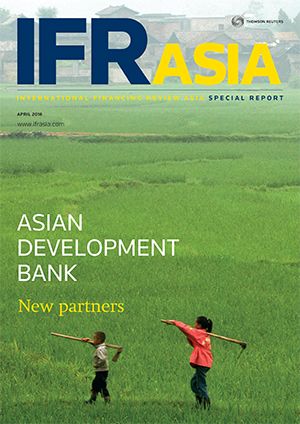The Asian Development Bank is taking commendable steps to position itself as more than just a lender. Faced with rising regional wealth and the arrival of new multilateral institutions, it is right to have one eye on its long-term future. To remain relevant in supporting Asian development, however, it will need to forge new partnerships and show that it can offer more than just its capital.
Based on the ADB’s own numbers, Asia needs to invest US$8trn in infrastructure over the 10 years to 2020. It’s probably the most frequently cited piece of ADB research, and one that also highlights the challenges the bank faces.
Infrastructure finance is the ADB’s bread and butter, but it disbursed just US$12.3bn of loans and grants in 2015 – by its own admission a tiny fraction of the around US$800bn a year that Asia needs.
Its lending to China, with around US$1.7bn approved in 2015, equates to less than 0.2% of the US$1trn of total loans at China Development Bank – just one of the country’s policy lenders.
The ADB is growing fast, with approvals up 23% last year, and is ramping up its support for the region’s poorest countries, where its assistance can make a real difference.
That’s a sound strategy, of course. But for the biggest impact on Asian development, the ADB will need to mobilize as many other sources of capital as possible.
That must include the Asian Infrastructure Investment Bank and the New Development Bank, the two new multilaterals that have been heavily backed by China’s leadership. By working together, the ADB can help ensure they focus on the right projects and maintain appropriate environmental and social standards.
Early signs there are positive. The AIIB is already planning to co-finance an ADB road project in Pakistan, and is studying a dozen projects alongside the World Bank. The head of the NDB, which will focus on projects in its five member countries, is also a well-regarded former ADB executive.
No single multilateral can hope to close the gap in Asian infrastructure on its own, and new partnerships with global climate funds, private equity funds and other investors are also welcome.
To avoid being overshadowed by these new sources of capital, however, the ADB needs to maximize the value of its decades of experience. That means passing on its knowledge and expertise through ambitious projects that can raise the standard for future developments.
That won’t be easy. President Takehiko Nakao is hiring more technical experts to raise the quality of the ADB’s services, but he will also need to convince the bank’s clients – the region’s top policymakers – to listen.
Member governments have in the past appreciated the ADB’s soft, diplomatic approach to technical assistance and economic advice. In the future, perhaps it will need to raise its voice more often.
To view all special report articles please click here and to see the digital version of this report please click here.
To purchase printed copies or a PDF of this report, please email gloria.balbastro@thomsonreuters.com.
